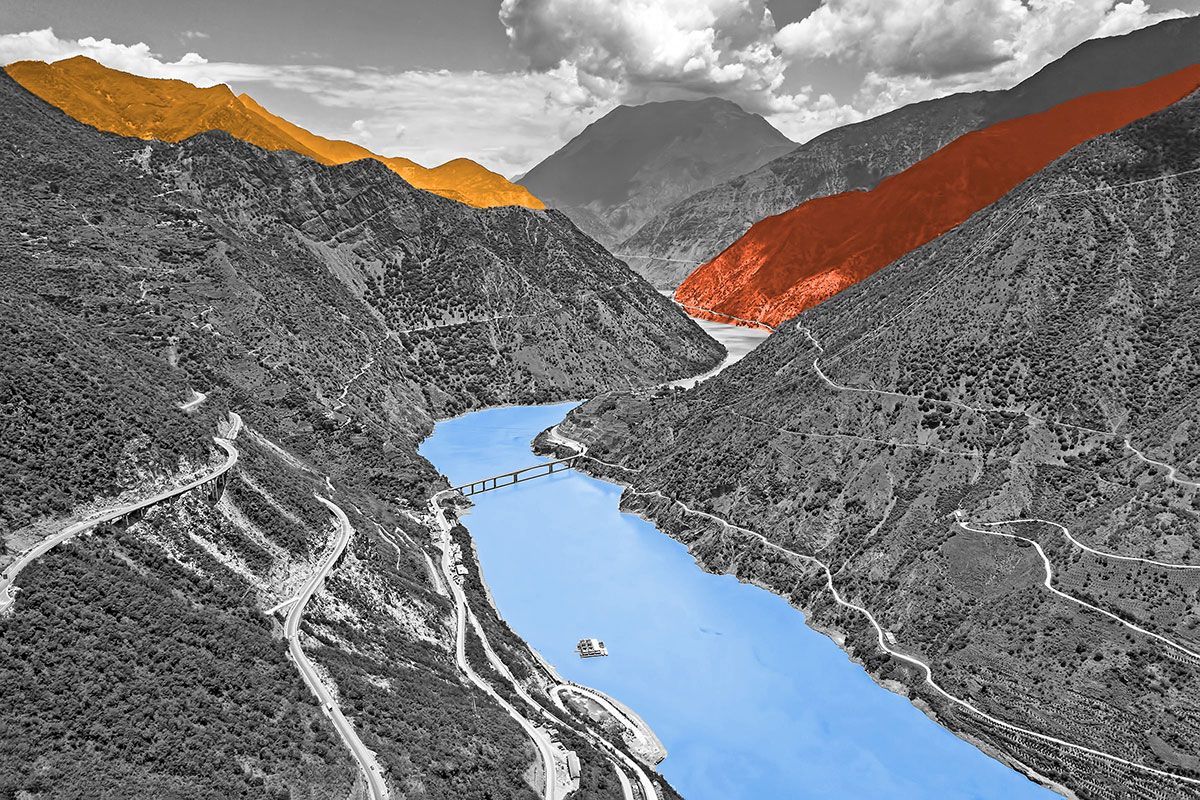

Few things are more central to human civilization than water. That’s why most ancient civilizations (Egypt, Indus, Sumer, etc.) flourished along rivers, and why many major cities today have followed suit. Around the world, 165 rivers are considered “major rivers” whose length and width tower over the competition.
But there’s more to rivers than just size. While some of the world’s most important rivers are long, winding natural wonders, others have outsized historical impact, represent an amazing moment of human engineering, or are simply beautiful to look at. These six facts concern some of the six most amazing rivers in the world, from the backwoods of Colombia to major metropolises around the globe.
The Search Is Still On for the Source of the Nile

Finding the source of the Nile, arguably the most famous and important river in human history, was one of the great adventures of the 19th century. Explorers including David Livingstone, Henry Morton Stanley, and Richard Francis Burton searched the White Nile, the river’s longest tributary (the other major tributary being the Blue Nile), to no avail. Today, scientists still aren’t sure where the furthest headwaters of the White Nile are, although one leading contender is the Ruvyironza River in Burundi.
The Yangtze River Watershed Takes Up 20% of China’s Total Landmass

The Yangtze is central to Chinese culture and civilization, and is the longest river to be contained inside only one country. Rising on the Tibetan plateau, the river travels east as it eventually empties into the East China Sea. The river ranks among the longest in the world, but its drainage basin is truly gargantuan. At 700,000 square miles, it takes up 20% of China’s total landmass. Some 250 million people live on or near the river, and the Yangtze provides the country with 35% of its fresh water. There is no China without the Yangtze.
The Danube Flows Through 10 Countries, More Than Any Other River in the World

While the Yangtze flows in only one country, the Danube passes through more countries than any other river. Those countries are Germany, Austria, Slovakia, Hungary, Croatia, Serbia, Bulgaria, Romania, Moldova, and Ukraine. In those countries, the Danube also passes through four capital cities, including Vienna, Austria; Bratislava, Slovakia; Budapest, Hungary; and Belgrade, Serbia (an additional five capitals lie in the river basin). The Danube’s central location in Europe, along with its proximity to so many cities, easily makes it one of the most important rivers in the world.
Caño Cristales Has the Nickname “Rainbow River” Because of Its Multi-Hued Waters

Caño Cristales isn’t one of the world’s longest or deepest rivers, and it doesn’t really feature prominently in Colombia’s history, but it does have one dazzling attribute that’s hard to ignore — it’s as colorful as a rainbow. Caño Cristales gets the nickname “Rainbow River” because it’s colored yellow, green, blue, black, and most especially red, hues that can be seen from May until November. This panoply of colors is derived from the reproductive process of aquatic plants (Macarenia clavigera) living on the riverbed. Because the river’s depth fluctuates between the wet and dry seasons, it’s only dazzlingly brilliant a few months out of the year.
No Bridge Spans the 4,300-Mile-Long Amazon River

Although the Amazon is the second-longest river in the world and a vital artery of the Amazon rainforest, not a single bridge crosses its expanse. That’s surprising considering there are more than a hundred bridges crossing the similarly-sized Yangtze, and nine bridges crossing the Nile in Cairo.
The simple answer for the Amazon’s lack of bridges is the lack of need for them. The cities and towns bordering the Amazon have ferries and boats; the river basin’s extensive marshes also make building a bridge a costly affair. Floating bridges, or pontoons, are also impractical as the width of the river can vary between 2 miles and 30 miles between the dry and wet seasons.
The Chicago River Is the Only River That Flows Backward

As Chicago changed from a Great Lakes-adjacent village to a booming metropolis toward the end of the 19th century, city planners were faced with a conundrum. The Chicago River, which carried much of the city’s waste, emptied directly into Lake Michigan, which was also the source of the city’s drinking water.
To fix the problem, engineer Ellis S. Chesbrough put forward an idea to reverse the river’s flow by building a ditch lower than both Lake Michigan and the river itself. When the project was finally completed in 1900, the Chicago River became the only river in the world that had reversed its flow.
